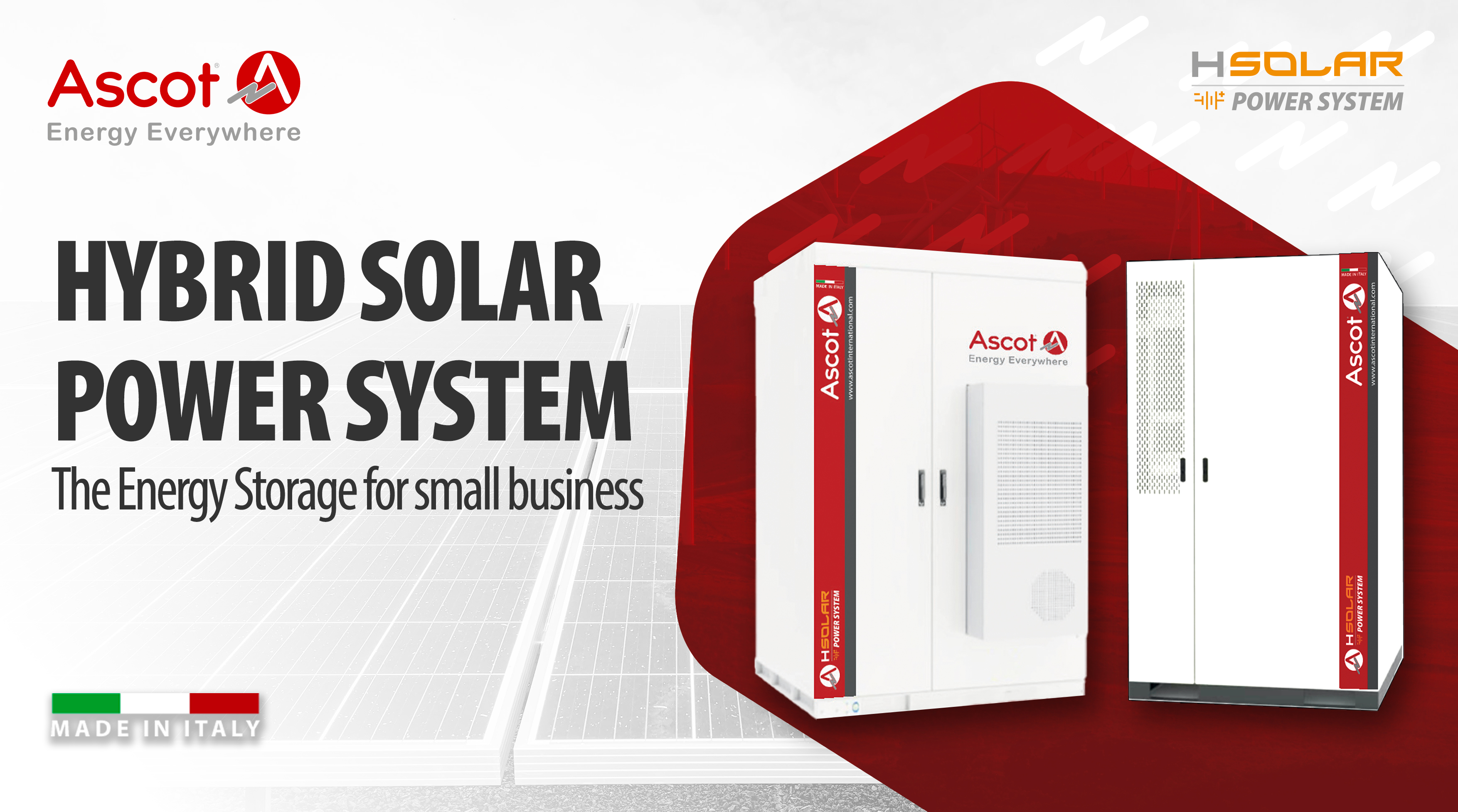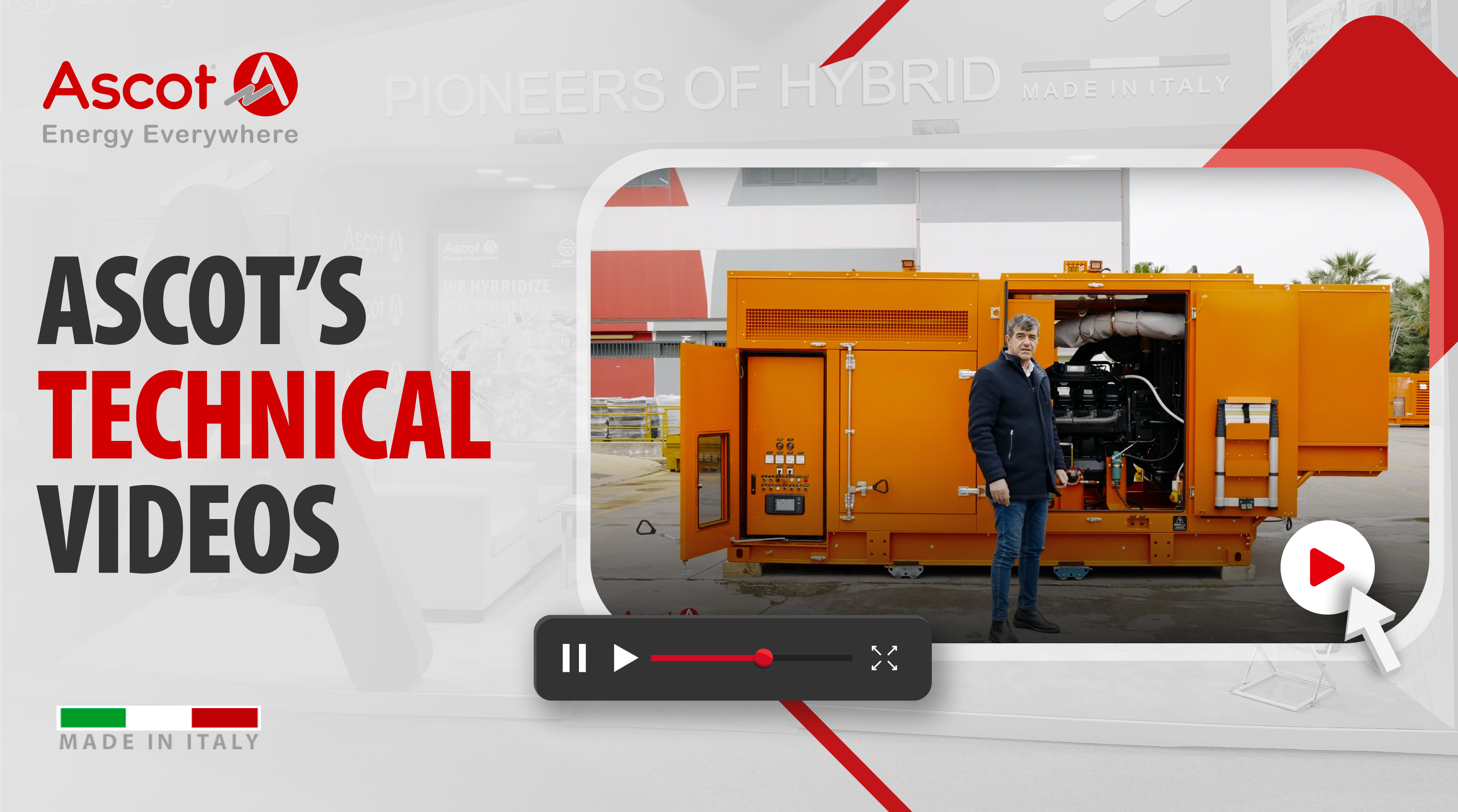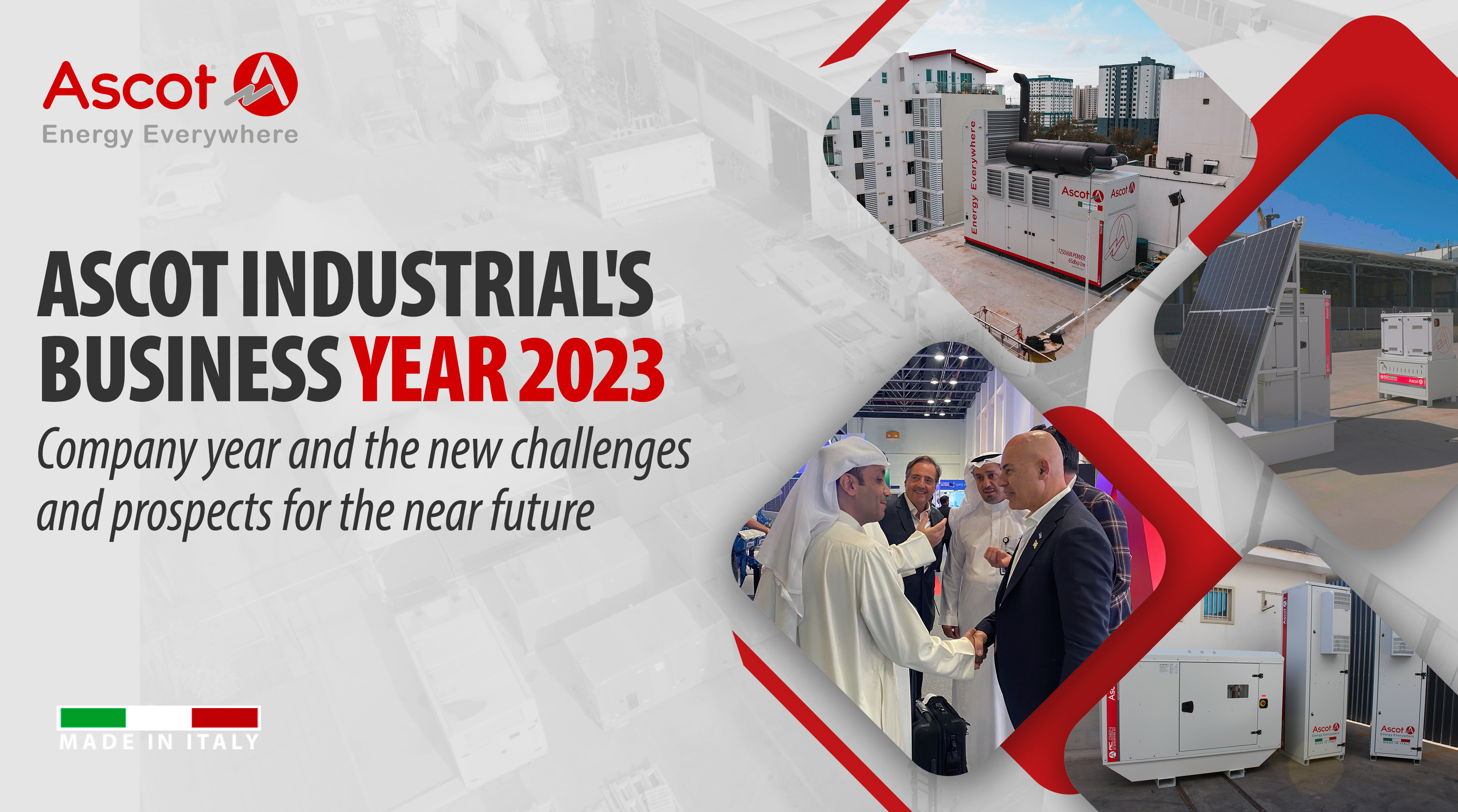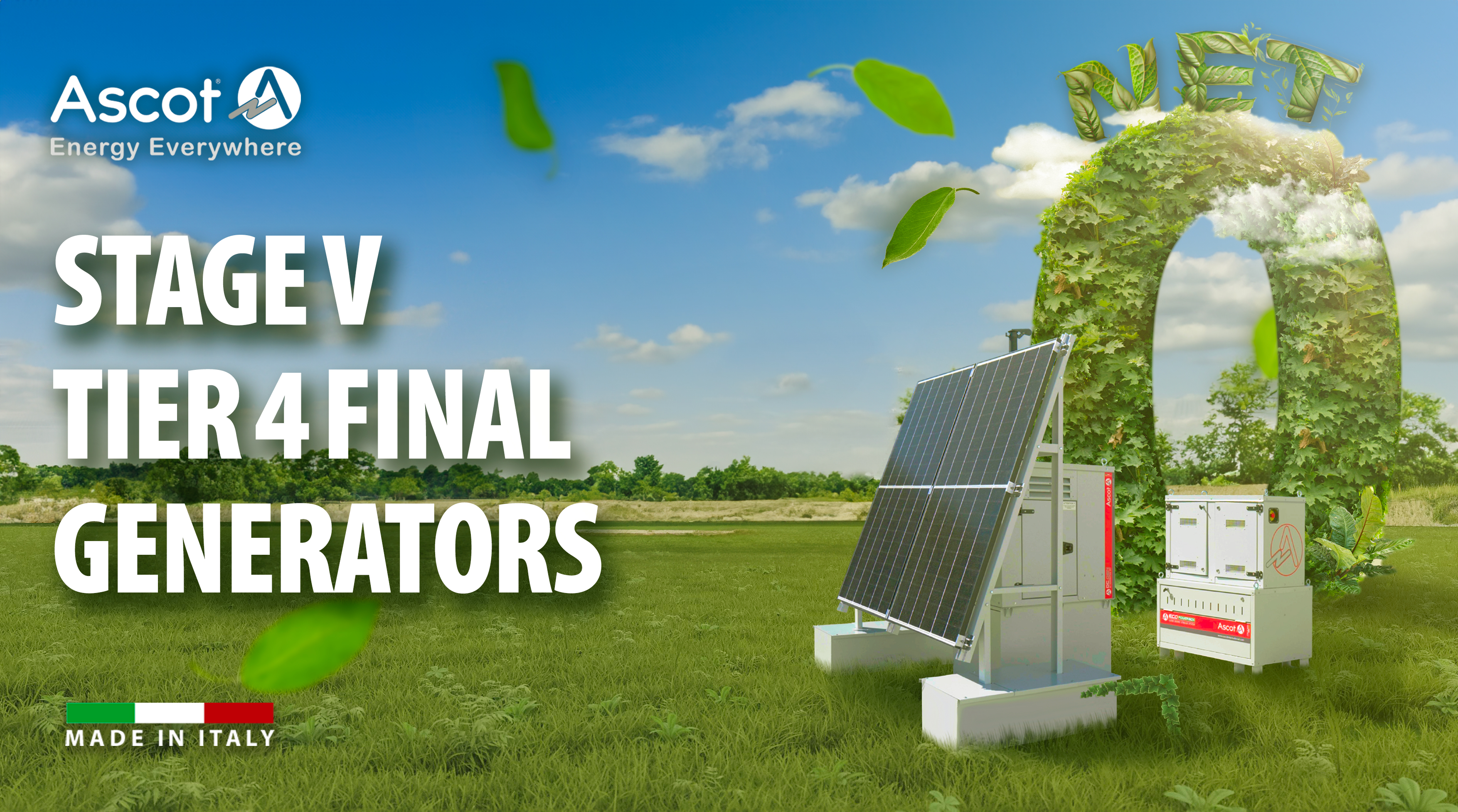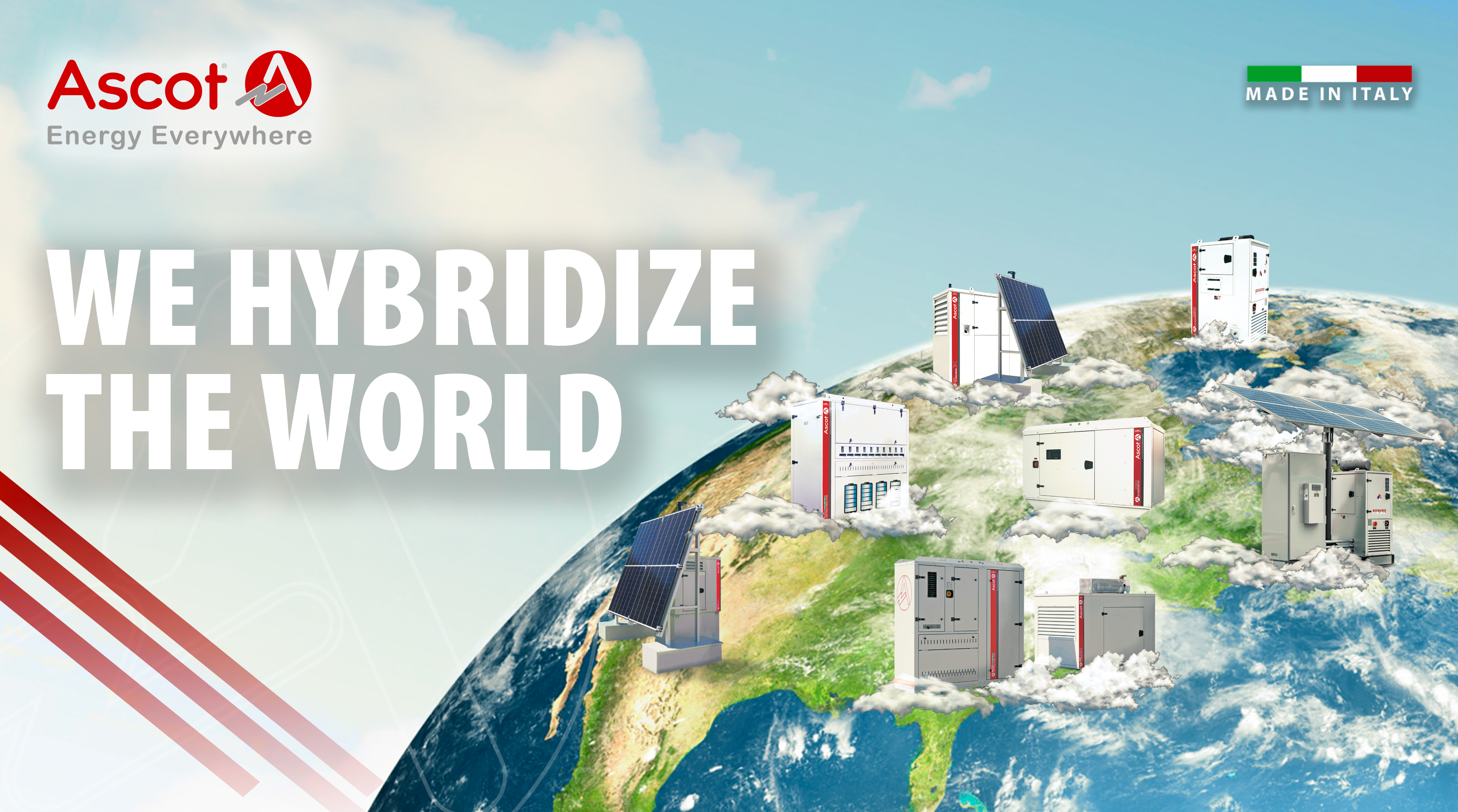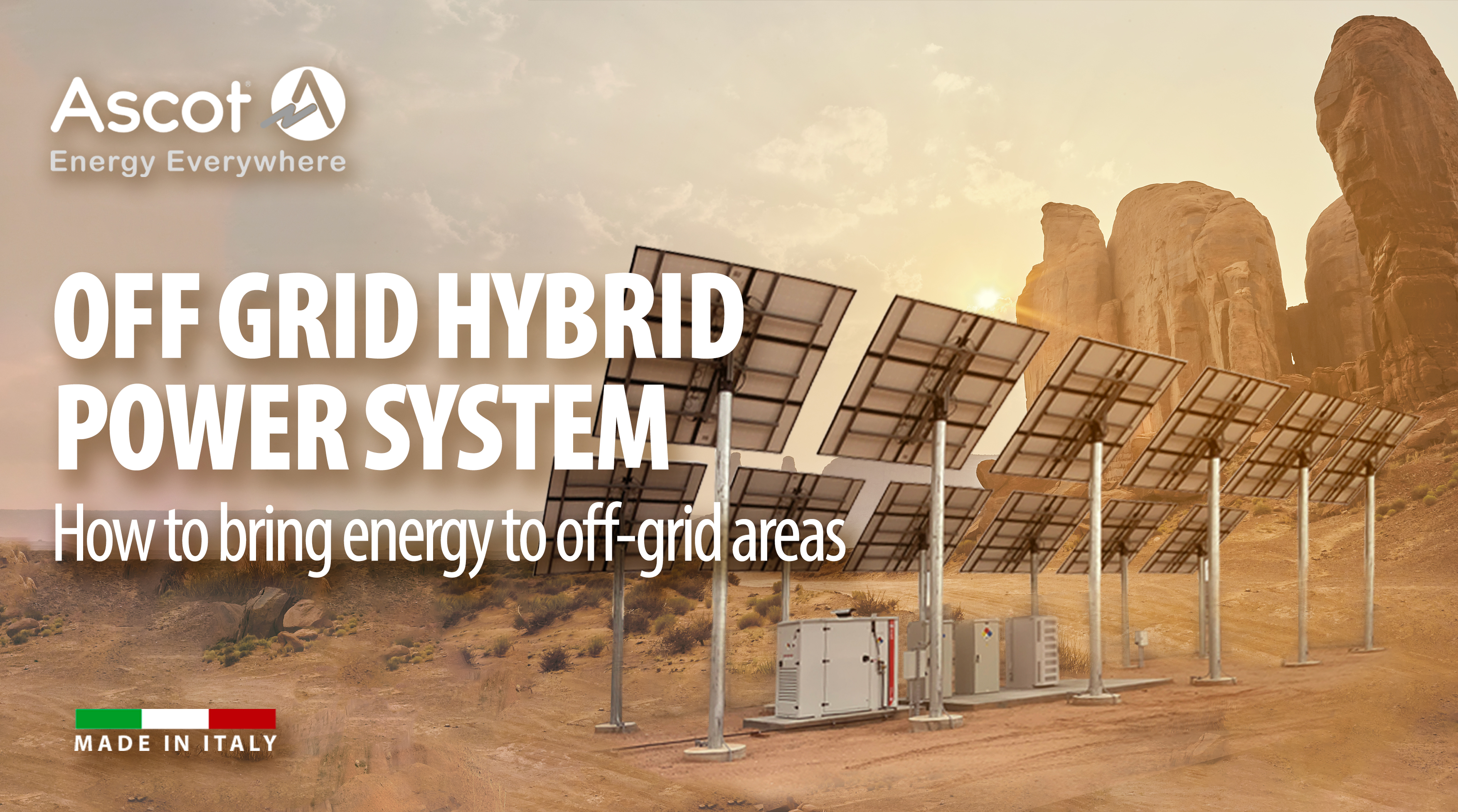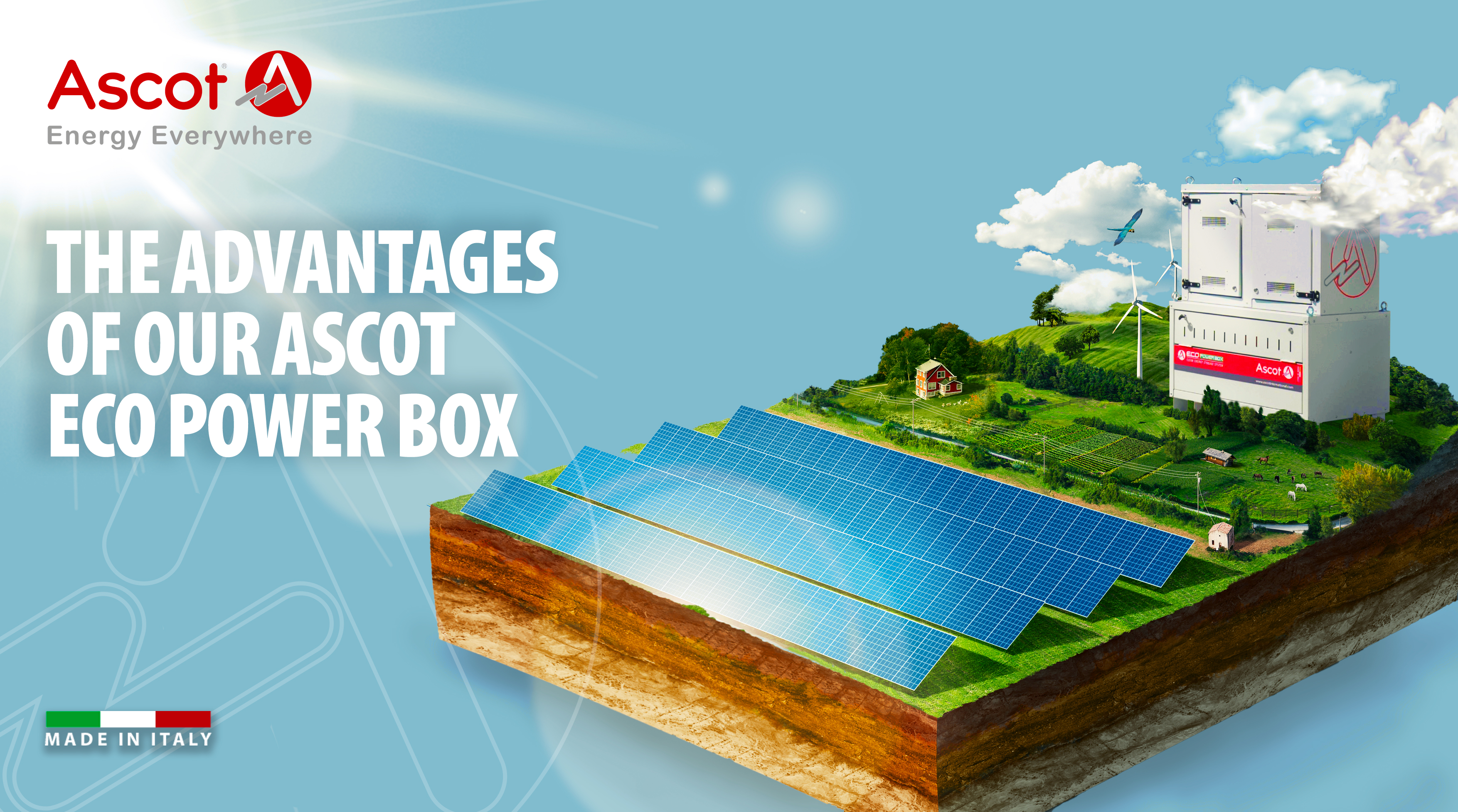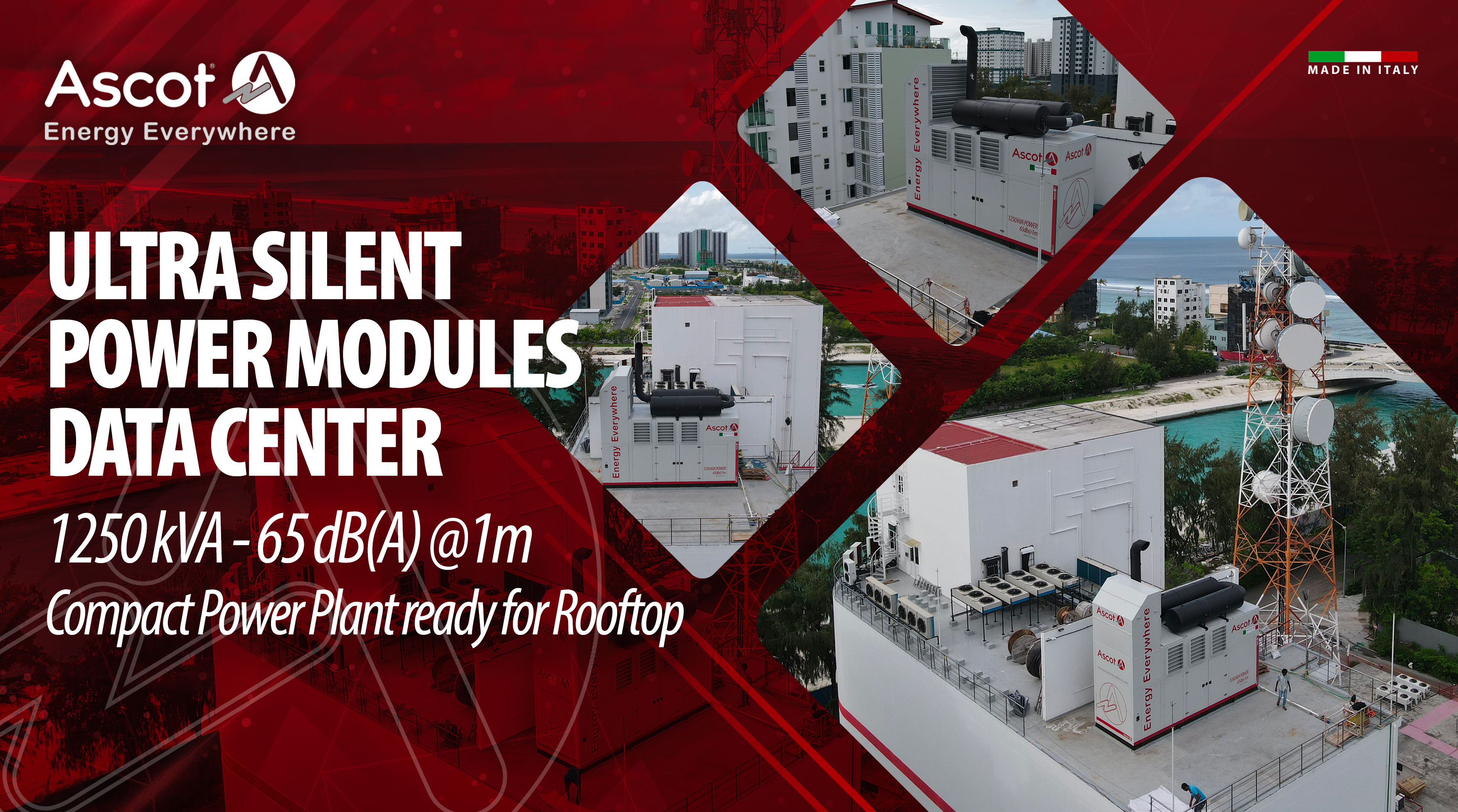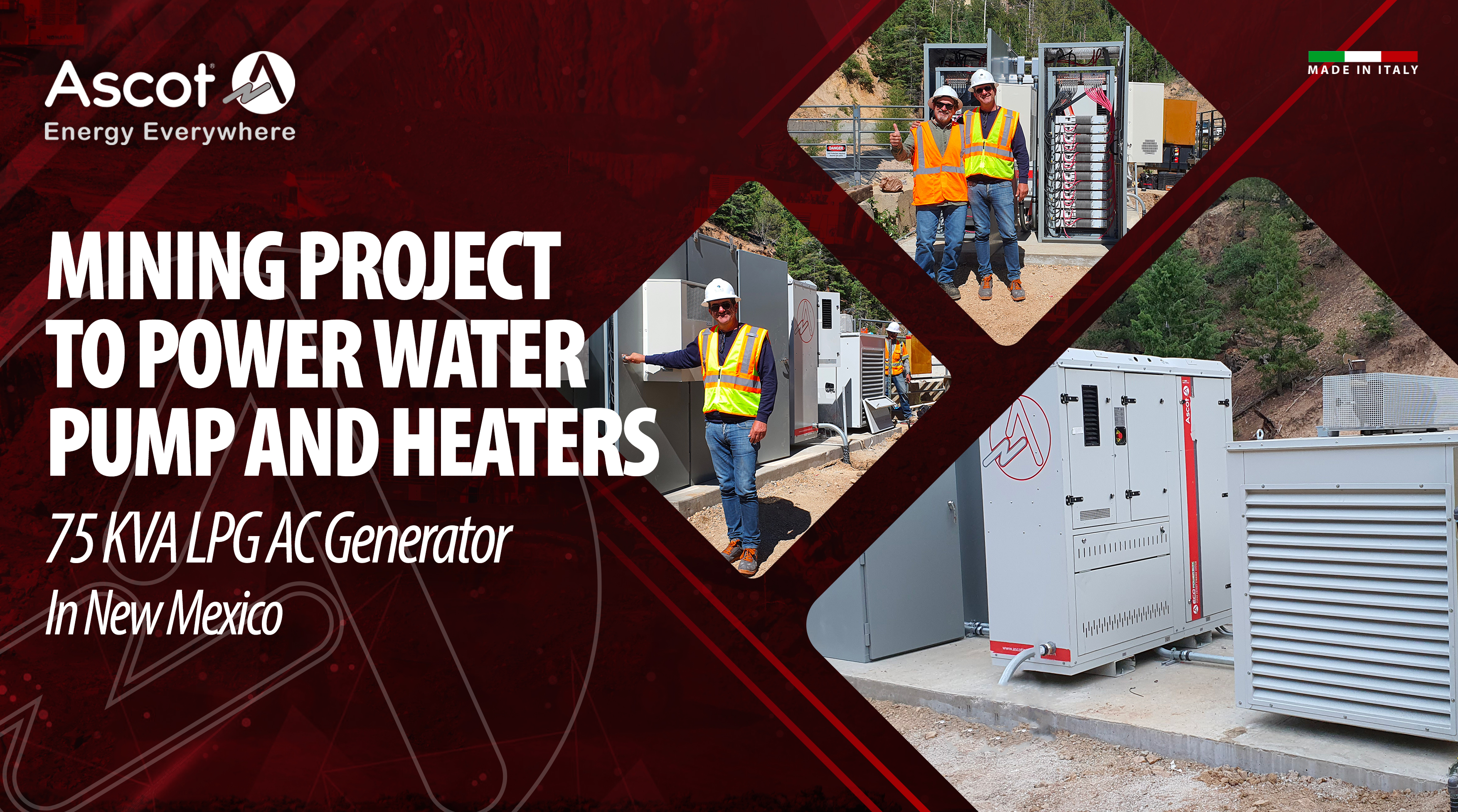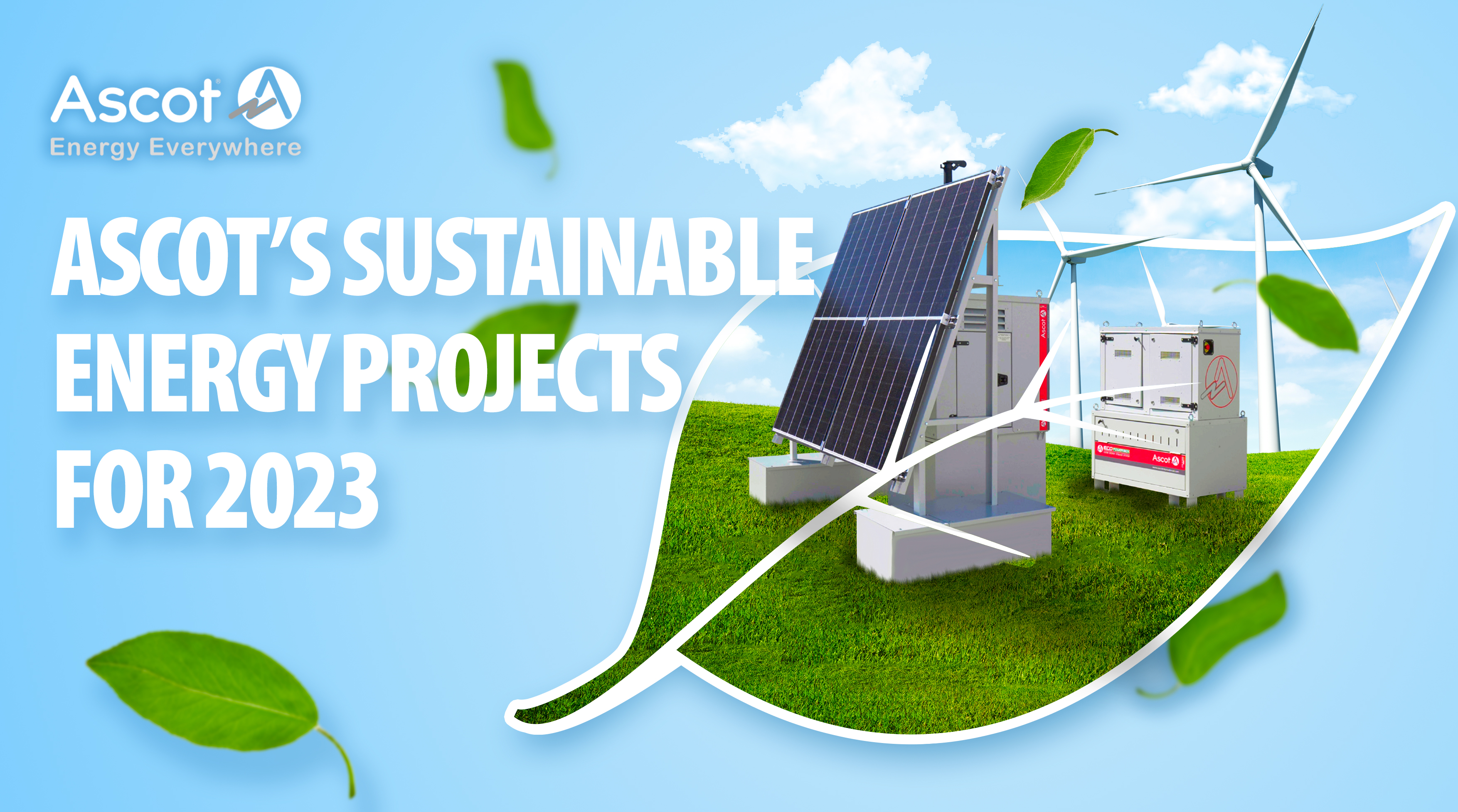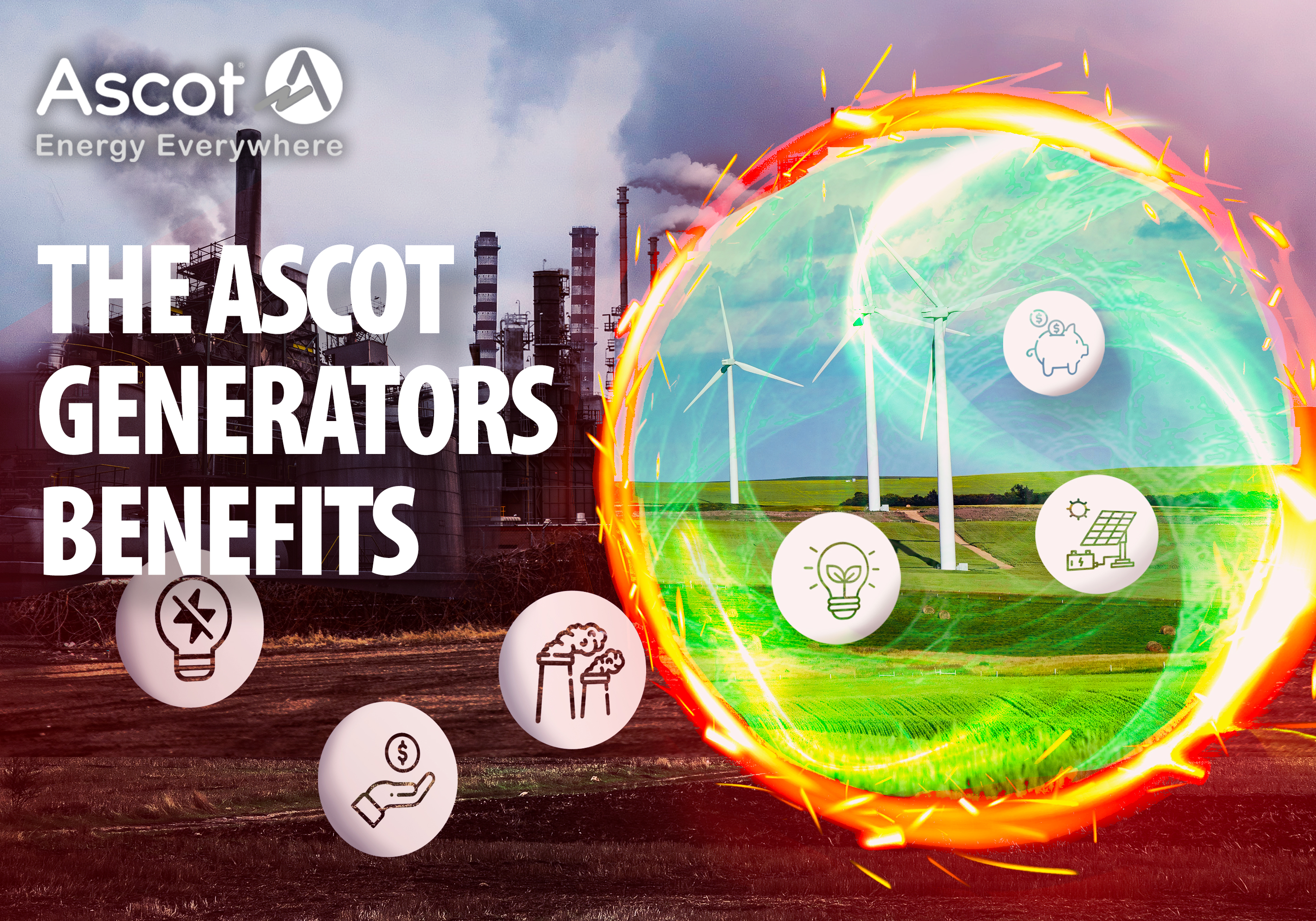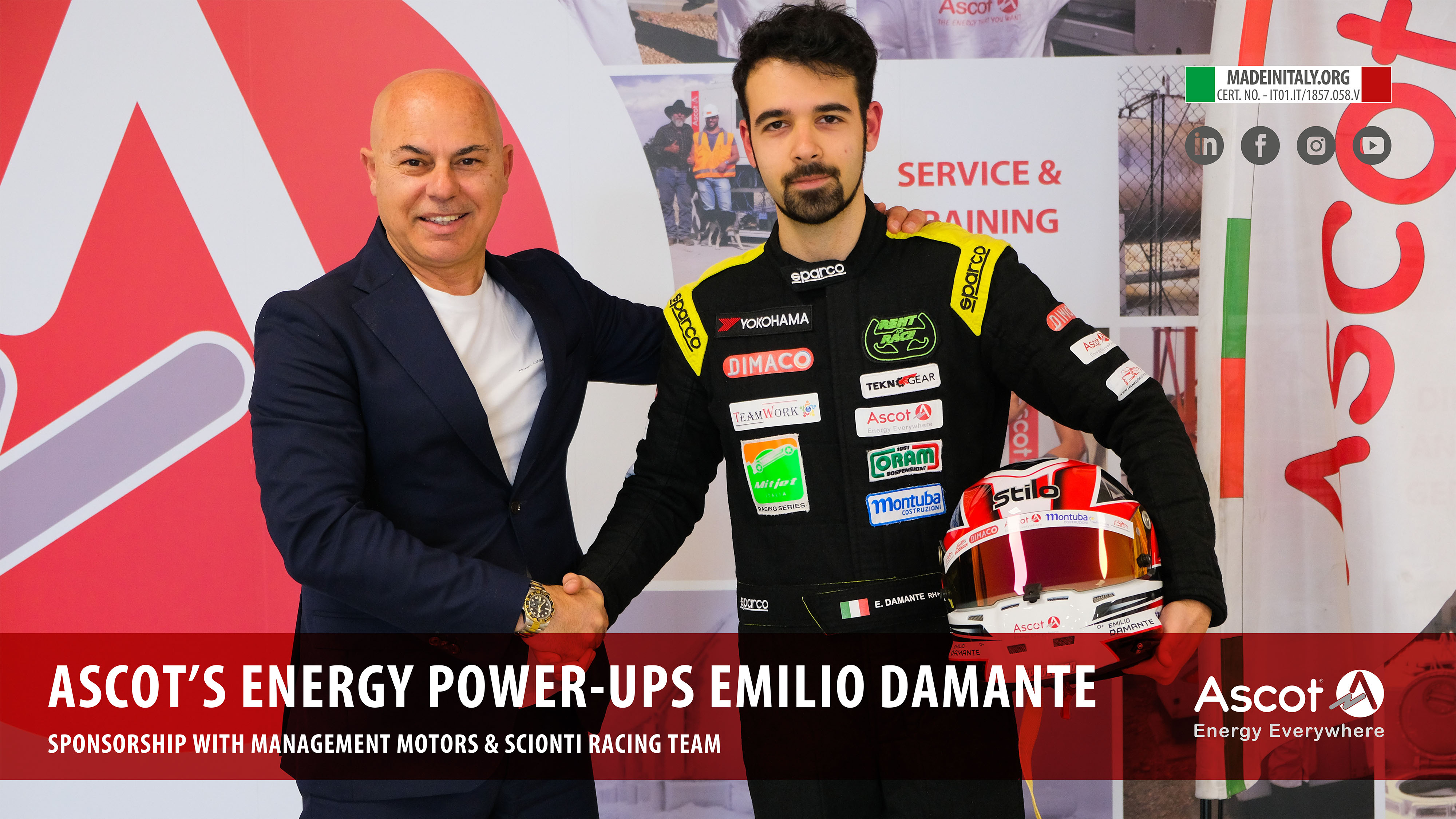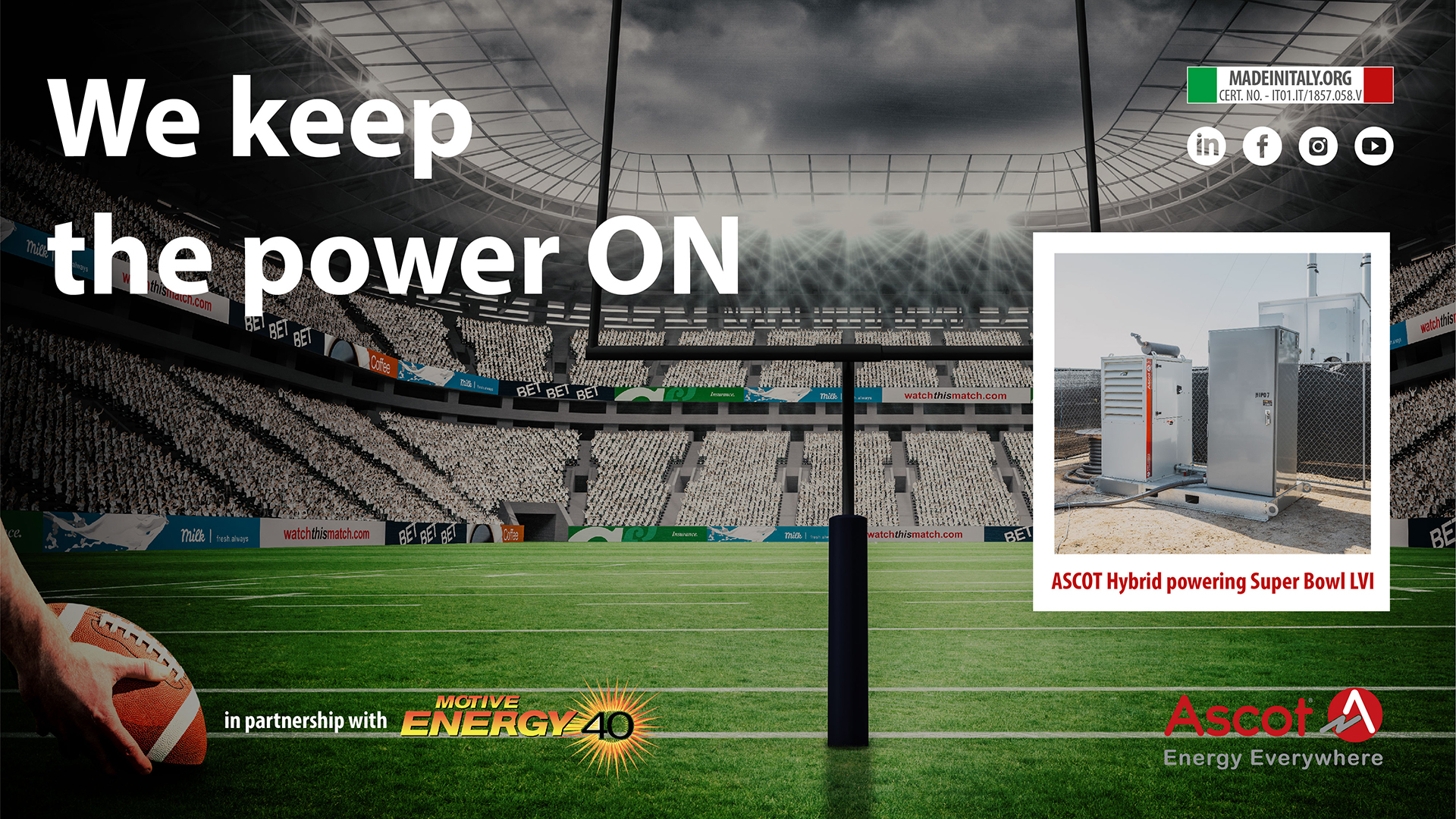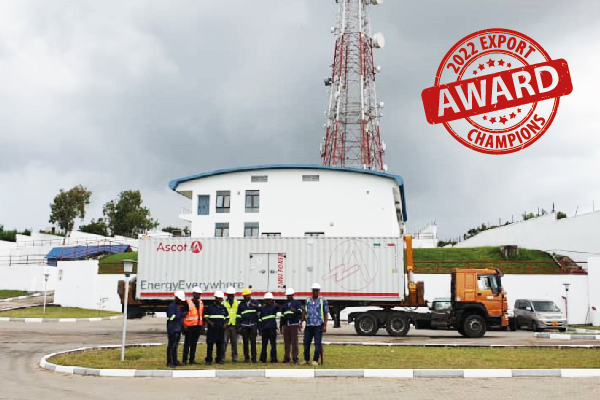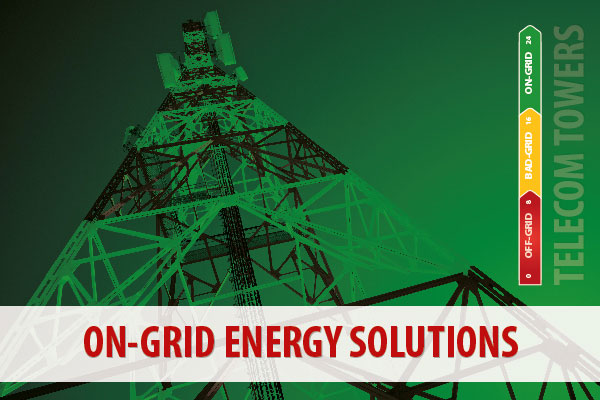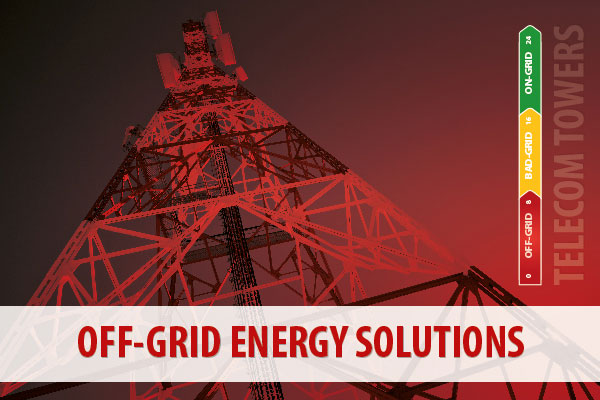What is the Hybrid Solar Power System
What is the Hybrid Solar Power System and how does it work
The Ascot Hybrid Solar Power System (HSPS) is an ideal solution for Off-Grid areas (where there is no electricity grid and energy is generated only through traditional generators) that allows harnessing renewable sources to produce clean and reliable energy.
It is an innovative hybrid technology that combines a photovoltaic system, SCC (Solar Charger Controller) that stores DC energy in batteries, and HPP (Hybrid Power Modules). In the context of a clean energy future, Ascot's HSPS is an ideal solution to accelerate the energy transition and generate power in many parts of the world, reducing costs, fuel consumption, and emissions.
What is the purpose of the Hybrid Solar Power System and when is it employed
Ascot's Hybrid Solar Power System is designed to store the energy generated by the photovoltaic system to fully power the load during daylight hours.
Excess energy is stored in batteries for use during nighttime. When the sun is not available or the accumulated energy is not sufficient to power the load, the Stand-by Generator comes to the rescue.
It combines the advantages of renewable energy with the reliability of immediate energy, becoming a secure and efficient primary power source.
Its purpose is, therefore, to ensure a significant reduction in emissions of up to 100% and to reduce operational costs associated with a Standard Generator that would otherwise run 24/7.
Applications of the HSPS
Ascot's Hybrid Solar Power System represents an innovative and effective solution to guarantee reliable, sustainable, cost-effective, and environmentally friendly energy supply.
It is an ideal all-in-one solution that meets the energy needs of any off-grid area:
- Islands & Resorts
- Small businesses
- Industries
- Factories
- Rural areas
- Farms
Composition and functioning of the Hybrid Solar Power System
Ascot's Hybrid Solar Power System is a practical all-in-one system that generates independent energy, where the savings will repay the initial investment in a few years.
The system consists of:
- Solar panels: an essential component of this system, consisting of solar cells that convert sunlight into electrical energy.
- AC or DC Generators: used as backup when solar panels cannot provide enough energy.
- SCC (Solar Charge Controller): a system that allows the energy obtained from solar panels to be stored in batteries.
- Batteries: store excess solar energy that can be used when needed, reducing energy consumption from the grid and ensuring advanced energy management.
Advantages of the Hybrid Solar Power System
Ascot's Hybrid Solar Power System offers numerous advantages compared to other energy production systems.
Firstly, it ensures 24/7 service continuity.
Furthermore, by using renewable sources and producing clean and sustainable energy, it reduces CO2 emissions.
Additionally, it provides up to 100% fuel savings, effectively reducing its usage to zero.
It also ensures greater grid stability by having a constant energy source, even in adverse weather conditions or peak energy demands.
Lastly, it is an adaptable central type suitable for all types of applications with quick installation and execution.
HSPS: Available models
The Ascot Hybrid Solar Power System is available in different solutions, ranging from 60 to 344 kW (up to 344 kWh).
The power depends on various factors and is studied, designed, and tailored with the entire Ascot team before its implementation.
All Ascot's Hybrid Solar Power ranges are in line with the SDGs (Sustainable Development Goals) and ensure a reduction in CO2 emissions.
Differences from ESPP (Energy Storage Power Plant)
An Energy Storage Power Plant (ESPP) is a system that stores energy produced from renewable sources in batteries or other storage devices. This energy can then be used when needed.
The main difference is that the Hybrid Solar Power Plant is used as the primary source in Off-Grid areas, as mentioned earlier, while ESPPs are employed in areas where the grid is "good," serving as an energy "buffer." They allow for storing excess energy during low demand and releasing it during periods of high demand.
For industrial applications, these systems are primarily used by those who already have grid-connected solar panels. The specific use of Ascot's ESPP consists of storing energy for later use, generally in the evening or when it is necessary to exchange it with the grid at a lower cost.
ESPPs are composed of Power Modules and 20 or 40-foot containers containing batteries.
The power range varies from 100 kW to 3000 kW - from 233 kWh to 7000 kWh.
Both represent important technologies for the transition to a low-carbon future.
Contact us for all the necessary information about our Hybrid Solar Power System.

